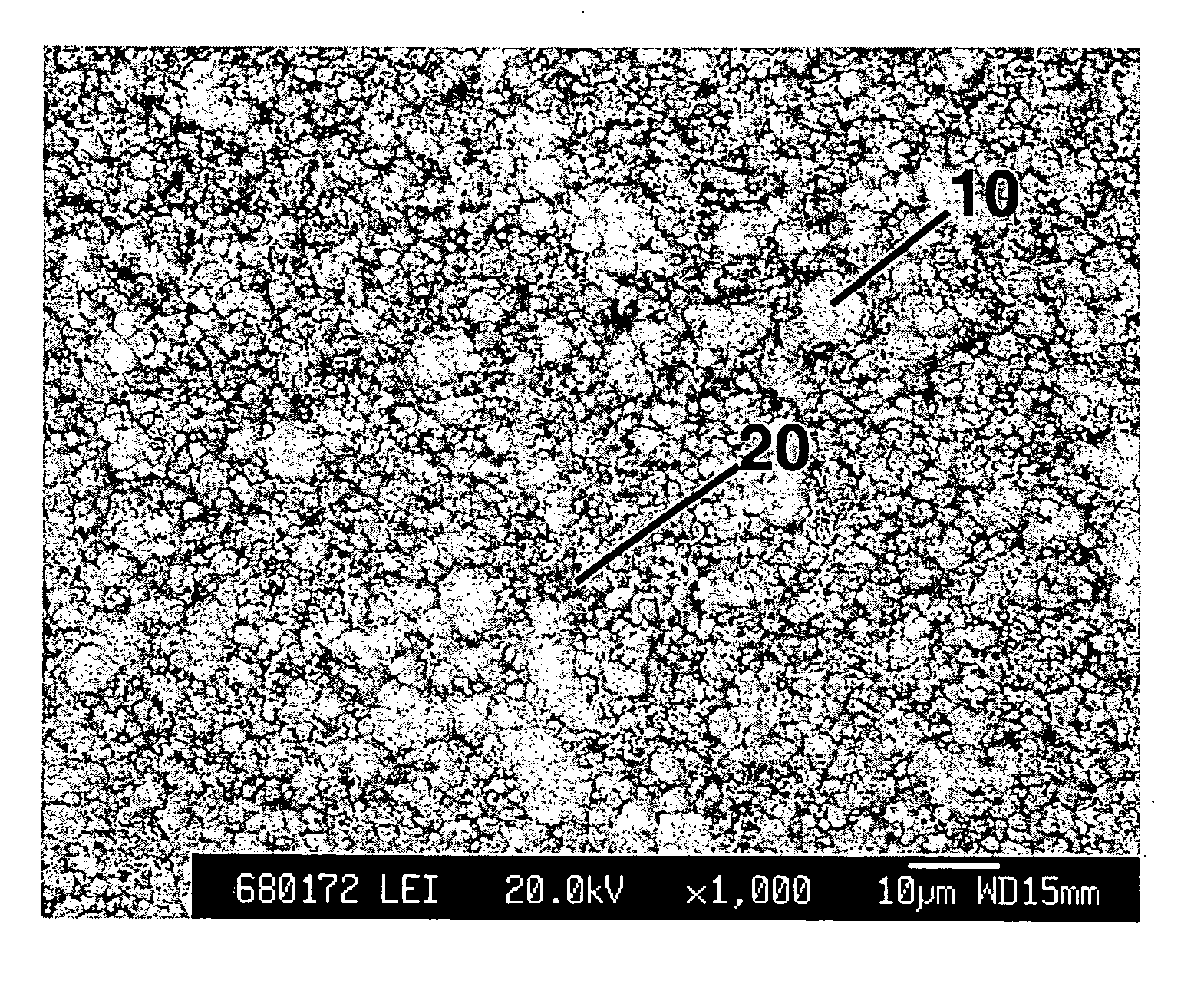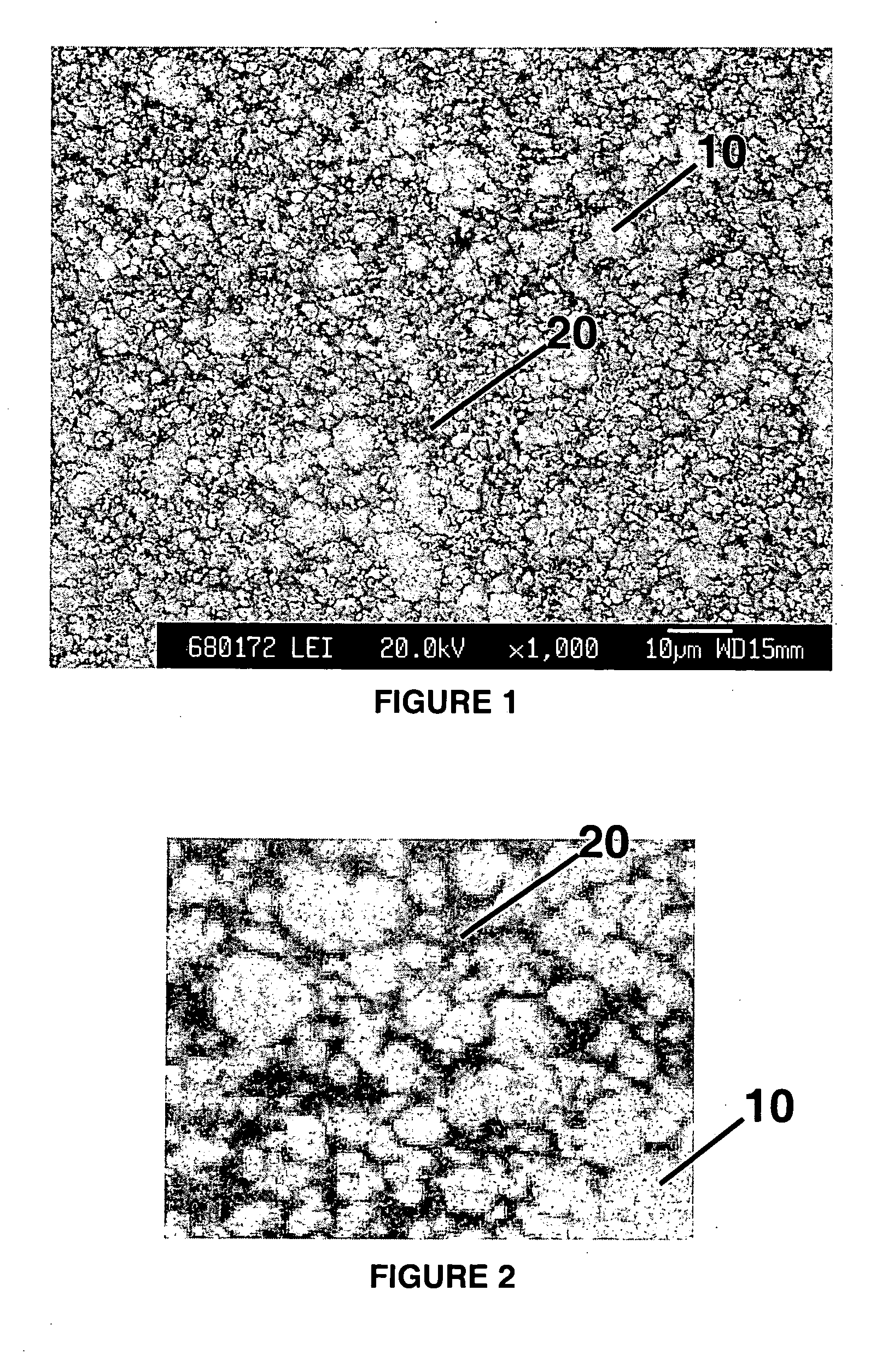Production of composite materials by powder injection molding and infiltration
a composite material and powder injection molding technology, applied in the direction of coatings, etc., can solve the problems etc., and achieve the effect of increasing the cost of composite materials
- Summary
- Abstract
- Description
- Claims
- Application Information
AI Technical Summary
Problems solved by technology
Method used
Image
Examples
example
[0034] In order to carry out double barrel powder injection molding, tungsten and copper PIM feedstocks were manufactured.
[0035] The tungsten PIM feedstock was formed by mixing tungsten powder (particle size 50 nm-1000 nm, and purity 99.9%) with a commercial binder comprising 50 weight % polypropylene, 45 weight % paraffin wax, 3 weight % stearic acid and 2 weight % carnauba wax for 1 hour at a temperature of 160° C. The solid volume loading of the tungsten PIM feedstock is about 38 to 55 percent. Similarly, the copper PIM feedstock was formed by mixing copper powder (particle size 10 μm (micron)-50 μm (micron) and purity 99%) with the binder for 1 hour at a temperature of 160° C. The solid volume loading of the copper PIM feedstock is about 45 to 60 percent.
[0036] The tungsten PIM feedstock was injected at a nozzle temperature of 170° C. and a pressure of 800 bar into a mold to form a tungsten matrix tensile bar. The mold was then opened, and a film of p...
PUM
| Property | Measurement | Unit |
|---|---|---|
| temperature | aaaaa | aaaaa |
| temperature | aaaaa | aaaaa |
| porosity | aaaaa | aaaaa |
Abstract
Description
Claims
Application Information
 Login to View More
Login to View More - R&D
- Intellectual Property
- Life Sciences
- Materials
- Tech Scout
- Unparalleled Data Quality
- Higher Quality Content
- 60% Fewer Hallucinations
Browse by: Latest US Patents, China's latest patents, Technical Efficacy Thesaurus, Application Domain, Technology Topic, Popular Technical Reports.
© 2025 PatSnap. All rights reserved.Legal|Privacy policy|Modern Slavery Act Transparency Statement|Sitemap|About US| Contact US: help@patsnap.com


